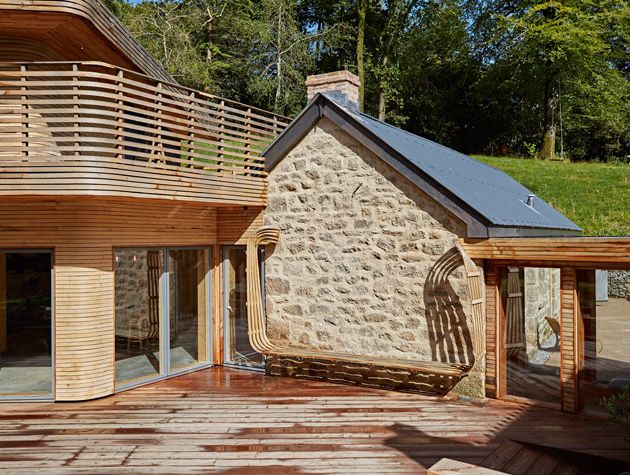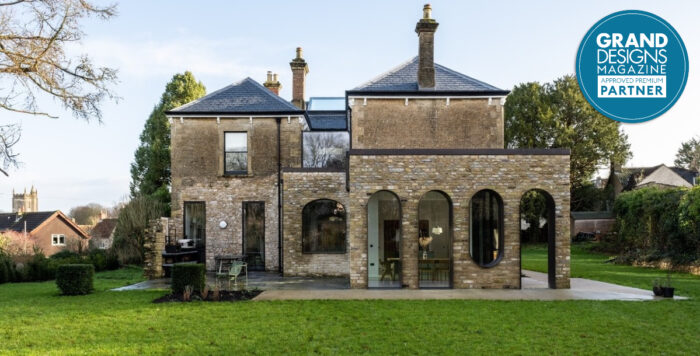Kevin McClouds introduction to architectural definitions
Our editor-at-large provides a summary of useful definitions
Recently I’ve had my knuckles rapped and been told that I’m not allowed to use certain words during prime time television. I thought I knew my way around the forbidden lexicon of TV (there are about six words that are really naughty and for which broadcasters have to formally apologise. And although one of these is entirely conventional in US cinema, it is taboo on British telly).
Fair enough, although I am now told there are more than six words and I can’t say context more than once an hour before 10pm. Meanwhile, the word vernacular is a no-no. I suppose I should be grateful for being able to say words like glazing and plinth. Crit, of course, is banned.
So I am partly resorting to code and have dusted down the slim volume I wrote 10 years ago: From Acroteria To Zoomorphic; How To Speak Architecture. Within, there are also helpful definitions for commonly used technical terms. It’s my introduction to AFL (Architecture as a Foreign Language). Here’s a summary of popular phrases your architect may use: think of these as a fireside companion to watching Grand Designs or House of the Year.

Photo: Matt Chisnall
Investigation: What architects do first, which is to meet you, find out stuff and have a good look around the site.
Intervention: Investigations usually result in an intervention or two. An intervention is a bit added or changed. The term might also be used, in the strategic, chess sense of the word, to describe an architect’s swift move to block any attempt by the client to change things.
Insertion: More painful than an intervention. An insertion usually looks as though it’s been thrust right inside a building, without the help of any lubrication.
Transparent (as in insertion, intervention or sometimes glass): Utterly opaque or impenetrable.
Perforations: In the continuous fabric of the envelope, an opaque term for windows.

Photo: Paul Ryan-Goff
Narrative: A story, particularly of a place. The experience of walking through a building, where rooms are episodic chapters, the carpet the prose style and the door handles the full stops. Grammar can be highly idiosyncratic. Most architects like to put owners’ belongings and paraphernalia in grey boxes in the appendix.
Cosy: An object to keep beverage containers hot, in a choice of new materials such as vermiculite concrete, orientated strand board or 316-grade marine stainless steel. An investigation will almost certainly be necessary before the design narrative of the ‘cosy’ can be evolved.
Repair: Mending a building, usually very, very slowly, involving (in the best possible conservation tradition) the use of traditional materials coupled with fantastically expensive high-tech solutions. Thus the wall of your cottage may be grouted with cheap lime and cow-dung slurry but also strengthened with 50 titanium explosive bolts, at £1,100 each. [Here’s a tip: modern conservation builders, such as stonemasons and carpenters who bring years of experience to the art of carving and careful replacement, treat ‘conservators’ (remedial specialists who have PhDs in chemistry) with barely-disguised contempt).] Traditionally, repaired buildings often have highly modern insertions (that hardly touch the old building) or interventions (tortuously argued changes to the old fabric of the building).

Photo: Matt Chisnall
Restoration: Mending a building, usually very, very quickly, with a lot of postulated ideas about how it might have looked. General builders like this approach because it’s fast. Architects abhor it because it smacks of pastiche and fakery. However, they are allowed to change their minds and choose the restore rather than repair option, if they feel it’ll provide a bigger opportunity for a major intervention or insertion.
Envelope: What you send your cheque in.
Fabric: Dress material such as linen or cotton available from all good haberdashers.
Fitness for purpose: Precisely what it says.
Orientation: The aspect of your building, in other words which way it faces. Accept nothing other than south.
Cantilever: The budget will be double what you thought.
Elegant solution: A fabulous and gravity defying piece of architecture or element of your building. Usually not cheap and nearly always designed by the structural engineer.
Object of enchantment: A fabulously expensive and bespoke detail in your building of particular delight to you, the purpose and meaning of which will remain completely obscure to all your friends. It will require complex annual maintenance and may fall off.

Photo: Darren Chung
A random disarticulation in the urban grain: Wibbly-wobbly buildings.
Desire line: The quickest possible route to the fridge or sofa.
Co-adjacency: A term used to describe, in a finished building, the confluence of experiences and views that no one had expected or that no one had bothered to figure out beforehand.









